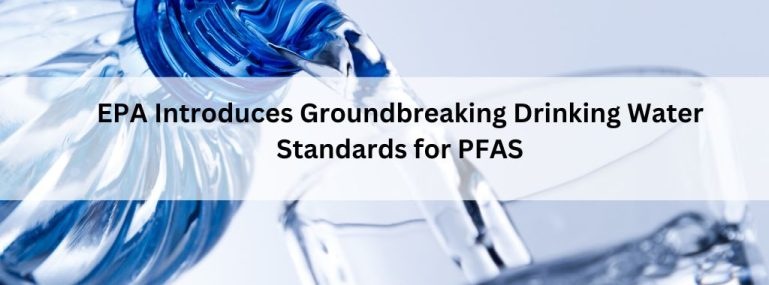The Environmental Protection Agency (EPA) has taken a significant step forward in safeguarding public health by issuing the first-ever drinking water standards for per- and polyfluoroalkyl substances (PFAS). This landmark action addresses growing concerns over the widespread presence of these persistent chemicals in water sources across the United States. PFAS, often referred to as “forever chemicals,” have been linked to a range of adverse health effects, including cancer, immune system dysfunction, and developmental issues. They have garnered increased attention in recent years due to their prevalence in various consumer products and industrial processes.
The EPA’s establishment of drinking water standards for PFAS marks a crucial development in the agency’s efforts to address the risks posed by these substances. By setting enforceable limits for two of the most common PFAS compounds, perfluorooctanoic acid (PFOA) and perfluorooctane sulfonate (PFOS), the EPA aims to ensure that drinking water supplies are safe and free from harmful levels of contamination.
Under the new standards, water systems will be required to monitor and control levels of PFOA and PFOS, with the goal of reducing exposure and protecting public health. This regulatory action provides clarity and accountability for water utilities, as well as reassurance for consumers concerned about the quality of their drinking water.
The EPA’s decision to establish these standards follows years of scientific research and public advocacy highlighting the potential risks associated with PFAS exposure. It reflects a commitment to evidence-based policymaking and proactive measures to mitigate known health hazards.
However, while the introduction of drinking water standards for PFAS represents a significant milestone, it is important to recognize that challenges remain. Numerous other PFAS compounds exist, each with its own potential health implications, and further research is needed to fully understand their effects and establish appropriate regulatory measures.
Additionally, addressing PFAS contamination requires a comprehensive approach that encompasses not only drinking water but also other sources of exposure, such as food, air, and consumer products. Continued collaboration between government agencies, industry stakeholders, and the scientific community will be essential to effectively manage and mitigate the risks posed by these pervasive chemicals.
The EPA’s issuance of drinking water standards for PFAS marks a critical step forward in protecting public health and ensuring the safety of drinking water supplies. It represents a victory for evidence-based policymaking and underscores the importance of proactive measures to address emerging environmental challenges. However, sustained efforts will be necessary to address remaining gaps in knowledge, expand regulatory oversight, and safeguard communities from the risks associated with PFAS contamination.
FAQs:
1.What prompted the EPA to issue drinking water standards for PFAS?
The EPA issued drinking water standards for PFAS due to growing concerns about the health risks associated with these chemicals, which are commonly found in water sources across the United States





